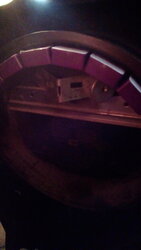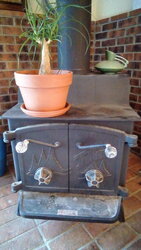I have an old Fisher, probably Papa Bear, Fisher on left, 2 doors. It is missing some piece on the back whick locks the damper down when not in use. No dampers photos on a couple of manuals I have viewed. Need to figure it out before house heat goes up the chimney. Thanks. Declan
Damper Lock Down
- Thread starter declan
- Start date
-
Active since 1995, Hearth.com is THE place on the internet for free information and advice about wood stoves, pellet stoves and other energy saving equipment.
We strive to provide opinions, articles, discussions and history related to Hearth Products and in a more general sense, energy issues.
We promote the EFFICIENT, RESPONSIBLE, CLEAN and SAFE use of all fuels, whether renewable or fossil.



